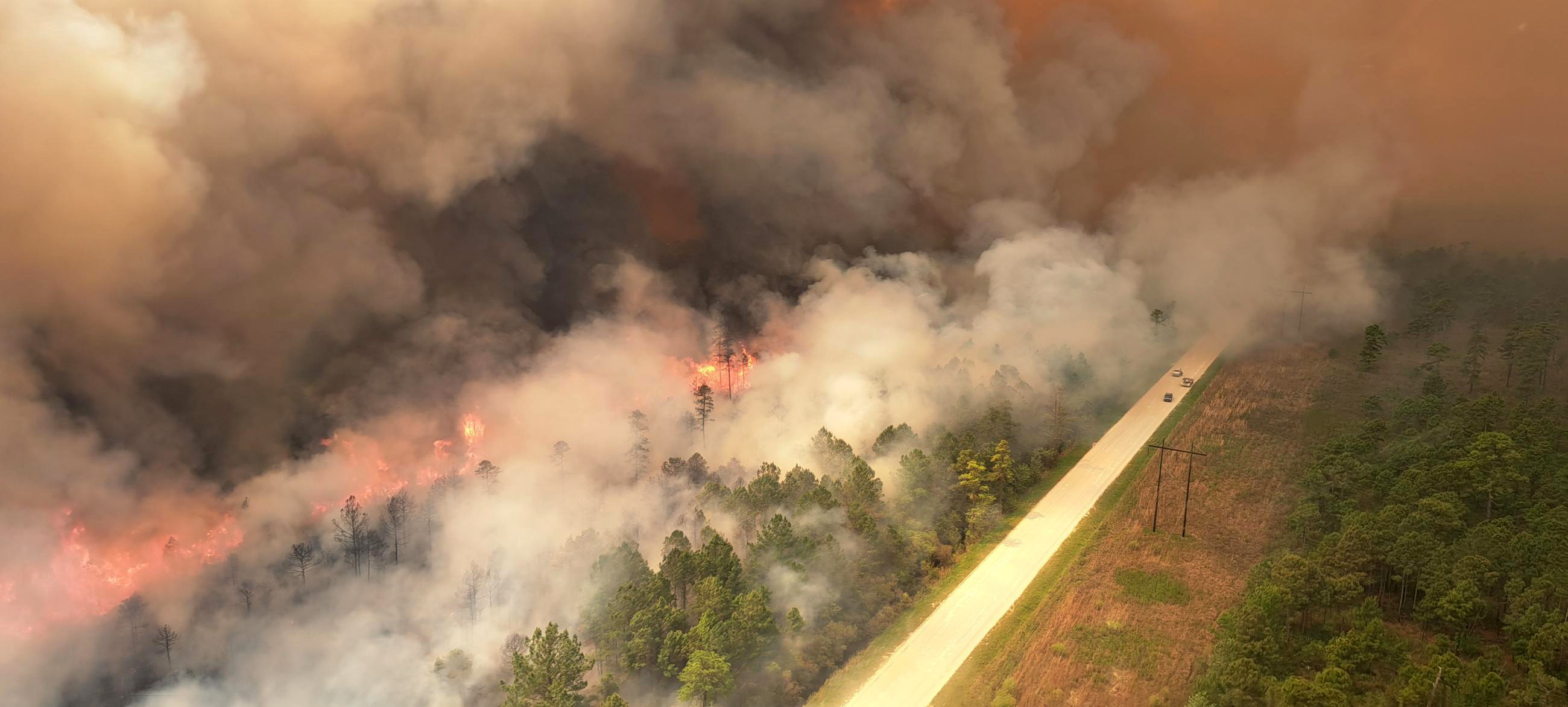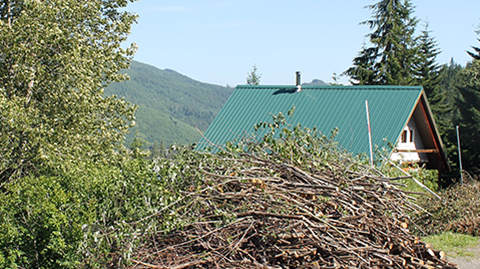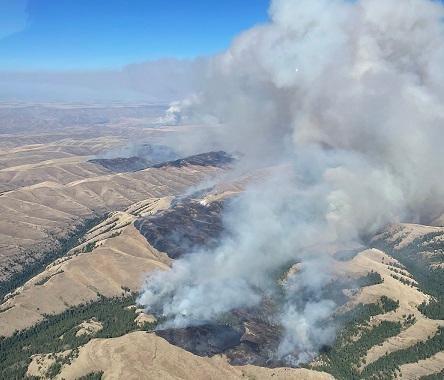
When it comes to wildfires in the United States, in any given year more than half happen in the Southeast.
In 2022, the South had approximately 39,000 wildfires. The South is also one of the fastest growing regions in the nation, and increasingly more homes are being built near forested lands. Together this creates complex challenges for protecting communities from wildfires and restoring the natural role of fire in national forests.
“Ongoing wildfires help us understand the importance and need to create and maintain fire resilient landscapes,” said Nicholas Larson, district ranger in North Carolina. “The issue is not whether our forests will burn but when they will burn and at what intensity.”

In April and May 2023, North Carolina’s Great Lakes Fire on the Croatan National Forest became a prime example of how multiyear prescribed fire treatments aid wildfire suppression. The prescribed burns previously completed in the area created defensible space for the communities near the Croatan and buffered the wildfire threat.
The cause of the Great Lakes Fire is still unknown, but it began as a small, 50-acre fire ignited in a pocosin, which is an upland swamp area. Many plants in pocosin have oils that make them burn at extremely high intensity.
“Our firefighters tried to directly suppress the wildfire, but it continued to expand despite our suppression efforts,” said Larson. “In a 24-hour period the wildfire spread 15 miles and close to 20,000 acres, blowing embers across a 90-foot road corridor with ditches of standing water that had alligators living in them.”
With dry and windy weather conditions contributing to the wildfire’s intensity, it grew to more than 32,000 acres within just a couple of days. The intense fire created unsafe levels of smoke in the air across eastern North Carolina for days.

The standard firefighting techniques of active back burning did not stop the fire, but an area that had recently experienced prescribed fire did.
“While suppression in the pocosin was not working, we knew we were going to be successful in the timber areas adjacent to the swamp,” said Larson. “We had previously used prescribed fire in those timber areas to reduce fuels and it fundamentally changed the behavior of the wildfire, reducing the intensity and giving our firefighters more options to manage and ultimately successfully suppress the fire.”
The entire Croatan National Forest is within a mile of residents, a detail not uncommon in North Carolina. As a matter of fact, North Carolina ranks No. 1 in the U.S. for acres designated as wildland urban interface, or areas where communities are intermingled with forest lands, (39.8%) and ranks No. 4 in the nation for number of people living in wildland urban interface.
The Forest Service develops, supports and promotes fire adapted communities because of the number of homes near forested lands. “Fire adaptation” means communities take mitigation actions so they can live with wildfire without harm and without extensive wildfire suppression efforts.

“We must proactively mitigate future wildfire risk by taking proactive steps. Prescribed fire is one of those proactive management tools we can use to apply fire in the right place, at the right time, and for the right reasons,” said Larson.
Editor’s Note: The Forest Service’s Southern Region is home to the largest hazardous fuels reduction program in the country with more than 60% of all prescribed fire occurring in the Southeast. Each year, the Southeast burns nearly 6.5 million acres for forest management and 3.8 million acres for agriculture across federal, tribal, state, and private lands.
The National Cohesive Strategy credits the Southern Region fuels reduction program’s joint efforts with directly or indirectly protecting more than 58,000 communities and 89 million acres in areas where communities are intermingled with forest lands. The hazardous fuels reduction program restores dozens of fire-adapted ecosystems, maintains threatened and endangered wildlife habitat, and guards hundreds of watersheds that supply drinking water to every major metropolitan area in the South.
Firewise: Information on preparing your home and property to reduce the risk from fire





